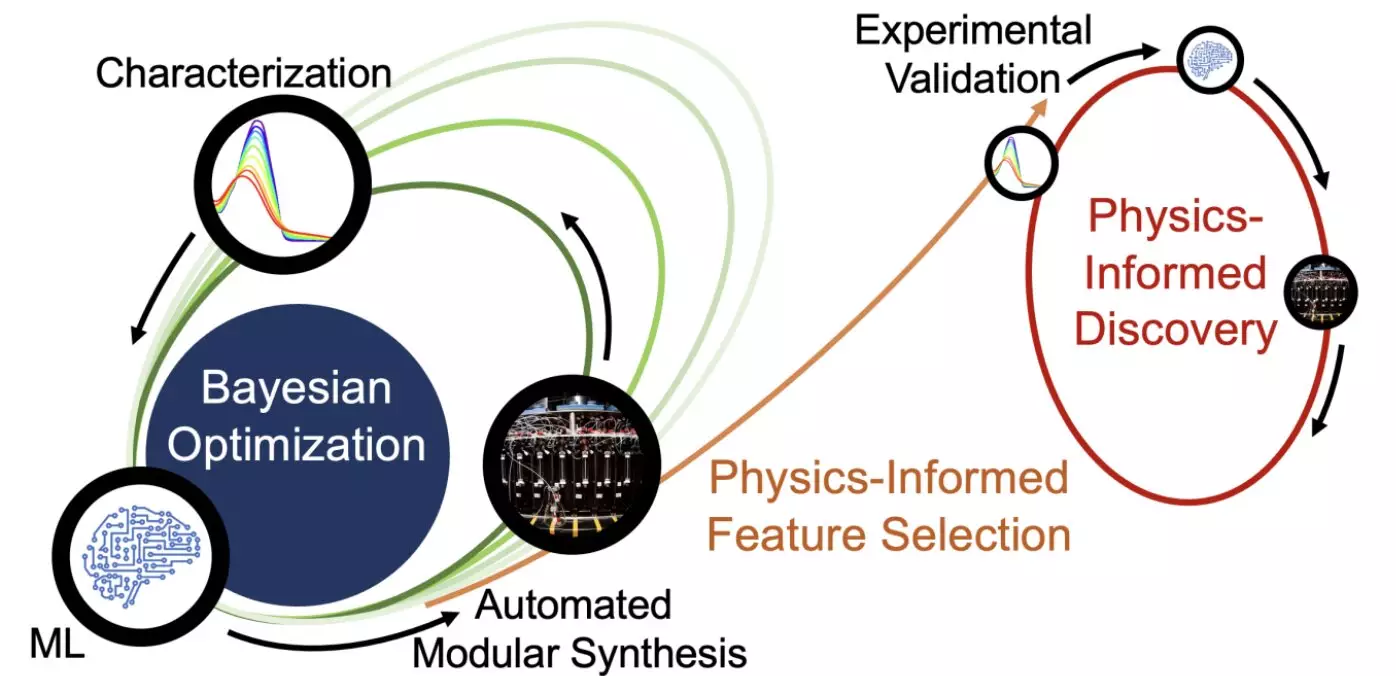The integration of artificial intelligence (AI) in research has transformed numerous fields, including chemistry, where it has shown a remarkable capacity for optimizing molecular structures. However, this innovation comes with a significant challenge: the opaqueness of AI decision-making processes, frequently referred to as the “AI black box.” In a groundbreaking study from the University of Illinois Urbana-Champaign, a dedicated team has not only tackled this challenge but has also leveraged AI to enhance the stability of molecules crucial for harvesting solar energy. By synthesizing automated experiments with AI insights, this interdisciplinary approach presents a novel way to understand and improve chemically engineered materials.
AI has made waves in various disciplines due to its predictive capabilities and efficiency in managing large datasets. Nonetheless, in the realm of chemistry, practitioners have often faced the frustration of navigating the complexities of AI recommendations without fully grasping the underlying mechanisms. According to researcher Nicholas Jackson, this obscurity can hinder scientific advancement in chemistry, where understanding the rationale behind optimizations is paramount. The inability of AI to elucidate its findings leaves chemists striving for clarity amid rapid technological advancements.
The barriers to the commercialization of organic solar cells—which promise flexibility and versatility compared to traditional silicone-based panels—can largely be attributed to their instability when exposed to light. These challenges have plagued developers since the inception of organic photovoltaics in the 1980s, generating an urgent need for a robust solution that maintains material performance while enhancing stability.
The inspiring study co-led by faculty members from the University of Illinois highlights the importance of collaboration across various academic disciplines. Through the convergence of chemistry, engineering, and materials science, the team, including Martin Burke and Ying Diao, pushed the boundaries of what is possible in chemical research. Their approach revolved around a technique termed “closed-loop transfer,” a structured method combining AI optimization with experimental validation to create a feedback loop for continual improvement.
By initiating the closed-loop experimentation process, the team employed AI algorithms designed to optimize the photostability of light-harvesting molecules. What followed was an iterative cycle where AI suggestions informed further rounds of chemical synthesis, enabling the generation of 30 novel compounds. This innovative method allowed researchers to streamline compound testing efficiently, paving the way for significant advancements in the quest for stable photovoltaic materials.
One of the most noteworthy aspects of the researchers’ methodology was their commitment to simultaneously uncovering the principles governing the stability of the new molecules. While conventional AI-driven processes culminate in identifying end products, this research focused on analyzing the inherent properties that led to enhanced photostability. This shifting perspective is groundbreaking, as it transforms the typical AI application from merely achieving outcomes to understanding the science behind those outcomes.
Jackson elaborated that the research team used a second set of algorithms, working parallel to the closed-loop experiment, to model chemical features that dictate stability—essentially determining the “rules” that make compounds effective in harnessing light energy. With this approach, researchers could derive testable hypotheses based on initial findings, creating a foundation for more directed exploration in future projects.
The results of their research not only proved the efficacy of their approach but also served as a stepping stone for future developments. The Illinois team effectively confirmed that by strategically selecting solvents, they could achieve light stability in a variety of light-harvesting molecules, with some compounds yielding up to four times the photostability of their predecessors. This proof of principle demonstrates the far-reaching potential of their interdisciplinary methodology.
Moving forward, the researchers envision a future where AI seamlessly interacts with scientific queries, whereby users could specify desired outcomes and receive actionable hypotheses. This interface holds the promise of democratizing complex chemical investigations, thereby accelerating progress in material development.
The work undertaken at the University of Illinois not only shines a light on the intersection of AI and chemistry but also underscores the significance of multidisciplinary collaboration in scientific innovation. By demystifying the AI black box, the researchers have opened new pathways for advancing organic solar cell technology and, potentially, other materials systems. As these methods evolve, the possibilities for sustainable energy solutions appear brighter than ever. The journey toward harnessing AI in research, coupled with a deeper understanding of chemical principles, promises to redefine the boundaries of scientific discovery.


Leave a Reply